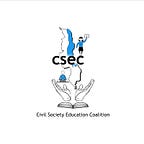Class Outside Classrooms: How Inequality Burdens the Education System
The Education Hub with Benedicto Kondowe
A child’s ability to access quality education is often an indicator of which side of the poverty line they stand.
To one side are the children who make up the centrepiece of studies and reports that paint a bleak picture. In 2021, for instance, a nationally representative phone survey conducted by The Centre for Education Research and Training (CERT) in collaboration with the Center for Global Development (CGD) and the National Statistical Office of Malawi measured the effects of the pandemic in schools and among students. It revealed that school fees were the leading cause of drop-outs among boys. The same study found that marriage and pregnancy were the leading causes of school dropouts among girls through the pandemic period.
To the other side are the children who are characterised most potently by what they are not. Specifically, they are the children who do not experience the same barriers to education, such as the ones outlined above, that those below the poverty line do.
When the Ministry of Gender, Community Development and Social Welfare reported in 2020 that 40,000 girls became pregnant during the first emergency closure of schools from March to October in 2020 due to the COVID-19 pandemic, not many amongst us pictured protruding bellies walking through the corridors of private or international schools.
Revelations that 13,000 child marriages were reported in the same eight month school closed did not make us picture backyard weddings in the affluent suburbs of Lilongwe or Blantyre or Mzuzu.
When we encounter alarming statistics, such as the Government estimates that about half of girls who marry in Malawi do so before their 18th birthdays, we may be shocked by the numbers or, cynically, merely see that these dreaded figures reaffirm the bleak story and trajectory of education in our country.
What is not in doubt or up for contemplation is that we all know what kind of children these devastating statistics apply to, and we know on which side of the poverty line they stand.
As if the challenges experienced by poor children were not discouraging enough, this poverty line — the invisible but inescapable demarcation of who has access to and is provided a quality education — rises up, thrusting more and more of the population into a context that sees them struggle to attain basic needs such as quality education, healthcare and jobs, according to The Crisis of Extreme Inequality in Southern African Development Community (Sadc): Fighting Austerity and the Covid-19 Pandemic report published in May of 2022.
The report, jointly done by Oxfam, Development Finance International (DFI) and Norwegian Church Aid, revealed that Malawi’s regressive tax system is such that instead of mitigating the widening wealth gap between the rich and poor, it actually ends up increasing inequality by 1 percent.
This indicates that the aforementioned barriers, and many not noted here, will affect a significantly higher proportion of learners — a regression that the education system, already a fragile engine, cannot bear.
The widening gap between rich and poor classes as well as the steady rise in population of primary school-age children, noted by Government’s 2019 Malawi Education Sector Analysis, will deeply exacerbate ongoing hindrances to the provision of education such as construction costs and maintenance of infrastructure, poor pupil-teacher ratios and salaries.
At the secondary level, the situation will be even more dire. In a system that already has fewer schools than required to accommodate all of its eligible candidates, according to the Malawi Education Sector Analysis, the expansion of the poor class will continue to encumber resource utilisation.
Instead of accelerating and building upon gains made in the past decade — such as the net primary enrolment rate, which according to USAID, is among the highest in the Eastern and Southern African region and has remained stable and high at around 90 percent — resources and efforts that could be used on making improvements in quality and management of the education system will further be utilised to merely accommodate the volume of school-age children burdened by inequality.
To tackle the problems of large class sizes, an inadequate supply of infrastructure, teachers, and teaching and learning materials as well as prevent greater stress on the provision of education to school age, there is a need to rapidly address the widening gap between the poor and the rich.
Government must seriously take on the recommendations made in the report by Oxfam, DFI and Norwegian Church Aid to boost public spending, increase workers’ rights, tackle joblessness and inconsistent piecework work, and increase taxes on the wealthy and large corporations.
Inequality is a crisis. It traps over 50.7 percent of Malawians below the poverty line and, as the report by Oxfam, DFI and Norwegian Church Aid indicates, it will trap many more. It will trap children below the poverty line with barriers that children from privileged backgrounds are able to overcome.
If we want our poor children to get to class, we must address the class that they live in. It must be made clear that educational inequality is the unequal distribution of academic resources, including but not limited to; school funding, qualified and experienced teachers, books, and technologies to socially excluded communities. Undoubtedly, K.A. Brill’s expression remains forceful when he said,
“Education should not be a competition resulting in winners and losers. Education should be a competition against ignorance, and all should be encouraged to win.”
